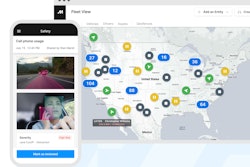Earl Jones wiped sweat from his brow as he stood from his seat behind the wheel to turn his big rig closer to his destination. That was in 1984 when he started his career in the trucking industry with no training, no power steering, no air conditioning and certainly no telematics.
“It's a lot different now in 2022 than it was in 1984,” Jones said.
Jones experienced the transition from paper logs to an ELD, from an atlas to navigation on a computer screen and from training in a classroom to training in realtime in the driver seat of his truck with a cab- and front-facing dash cam.
Jones said he began noticing a shift toward more technology in a truck in the mid-90s as the prevalence of ELDs were on the rise but not enforced.
“I remember thinking, ‘I don't think I could ever deal with electronic logs,’ but here we are now,” Jones said. “I never dealt with a dash cam until I started with Cargo Transporters (CCJ Top 250, No. 170). When I first started, I was a little nervous about it. About two weeks after, I began to relax, and I realized it was definitely for my safety.”
Now, like ELDs in the 90s, dashcams are becoming more prevalent or rather the industry standard, said Hayden Cardiff, founder and CIO of Idelic, the developer of a driver-performance management platform. And they’re changing the face of driver training.
While there are many benefits to dashcams – driver exoneration in the event of an accident, potential decreased insurance rates and even driver retention – safety training drives them all.









